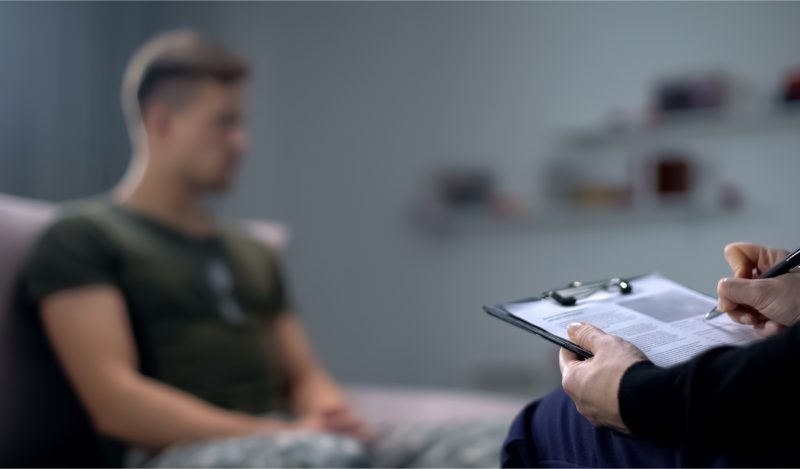The mental health consequences of our pandemic response are predictable, with many warning right from the start of the likely psychiatric consequences of the withdrawing of most structures of civic society for a period of months on end.
Too often the priorities are framed as a balancing act between “physical health consequences from the virus” vs “mental health consequences from the pandemic response,” with little or no attention as to what psychiatric treatments actually consist of. This has led to a focus on how overwhelmed psychiatric services are, but not on the details of what the psychiatric response actually has been or could be.
The psychiatric system does not exist as a separate entity to the medical establishment; rather it is part and parcel of our healthcare system. Psychiatric services also function alongside and within institutional settings – be they psychiatric hospitals, care homes, prisons, and smaller supported accommodation units. Despite an increased awareness of mental illness, there remains little understanding of the realities of life on psychiatric wards.
Psychiatric services, particularly in inpatient settings, are places where the carceral realities of a lockdown and restriction-based approach are enacted in full force. Therefore, the emotional distress of lockdown can be experienced in its extreme in these settings. Yet they are also looked to as a solution to some of the adverse effects of our pandemic response.
Psychiatric services as a system of incarceration
Mental health wards and the psychiatric system are one component of the carceral functions of the modern state, and people admitted to mental health wards are subject to significant deprivations of liberty and surveillance. Deprivations of liberty are nearly always enacted along lines of existing inequalities, and mental health wards are no different, with young black men disproportionately represented amongst those who are detained on psychiatric wards.
The lockdowns have represented a significant increase in the carceral functions of the state, and the deprivations of liberty that resulted from the lockdowns were enacted in a discriminatory fashion, such that those that already had the least liberty were restricted the hardest. This is to be expected, as government-driven deprivations of liberty were always likely to be most strongly enforced in those that the state already had the most control over, which includes those that are in state-run institutions such as psychiatric hospitals, as well as people in other institutions, such as prisons, care homes, and immigration detention centres.
The escalation of carceral-type policies on mental health wards during the lockdown was significant, and included such practices as removing leave from the ward, restricting or removing visitors, and solitary isolation for new admissions to mental health units.
Furthermore, mandatory mask wearing, and consequent removal of facial expressions, made it harder for staff to deescalate challenging scenarios on the ward, which may have contributed to an upsurge in incidents of aggression, which itself could lead to people being considered to be aggressive and at immediate risk of violence, and therefore placed in seclusion.
The reality of an individual, in a state of crisis, frightened and anxious, being on a psychiatric ward with masked strangers, unable to have family members visit, acting out from a place of fear, and being led into a seclusion room, is a stark representation of the brutal realities of how lockdown can be experienced by people who are already stigmatised with little agency or autonomy.
In addition, the psychiatric system itself is a clear illustration of how medical power asserted itself throughout the lockdown, monopolising society as the only acceptable response to emotional distress. While hospital chaplaincy services were withdrawn, religious institutions stopped doing in-person pastoral visits, and other sources of community and support were closed, psychiatrists were able to continue seeing their patients in person, including doing home visits.
For several months, psychiatry was the only accessible source of support for people in crisis in the community, whilst simultaneously those in psychiatric care in institutional settings had to bear the brunt of some of the strictest restrictions enacted across the whole of society.
Psychiatric services as a solution to the lockdown mental health crisis
The goal of psychiatric treatment is to support people who have a mental illness to attain health – with health defined as “a state of complete physical, mental and social well-being and not merely the absence of disease or infirmity.”
There are different models of mental health treatment, with the biopsychosocial paradigm being dominant in most psychiatric services. However they mostly have a shared goal of supporting the person to be more connected with their own reality, and to be more connected with those around them. This is exceptionally difficult to do in a restricted society.
Furthermore, most mental health services, at least in the inpatient setting, have a multidisciplinary model of treatment, with part of the treatment consisting of groups, activities, family work, occupational therapy, and supported trials of periods outside of hospital prior to being discharged.
Yet most of these treatments were removed, and group programmes suspended, during the lockdowns, which placed severe limitations on what mental health treatment could be provided. This meant that psychiatrists and mental health services had to rely more heavily on pharmacology – as the other treatment options were suspended or restricted.
This has now been clearly demonstrated, with there being clear evidence that antipsychotic prescribing increased for people in dementia during the lockdowns, which in itself is associated with an increase of mortality and other serious adverse effects, including stroke.
Thankfully, in most parts of the world, the heavy lockdown restrictions have subsided, and it is now possible for community activities and group programmes to restart. However in places where most group and community activities require demonstration of vaccine status, those who are unvaccinated are simply excluded from some of the key aspects of psychiatric treatment.
Psychiatric services also function along a medical model, and the institutions of psychiatry are part of the medical establishment. Many have warned against the wisdom of continued restrictions on the grounds of their mental health consequences. However, if part of the criticism of lockdowns is that they represent an expansion of medical overreach into the lives of the healthy, then some might argue that opposing lockdowns from within a medical framework, by citing their negative impacts on mental health as a reason for abandoning lockdowns and restrictions in the future, will never lead to a satisfactory dismantling of the lockdown infrastructure.
Furthermore, the solution to distress that is caused by closed services, missed education, lost income, poverty, debt, or coercive public health interventions is not to be found in psychiatric services – and particularly not in psychiatric services whose treatment options have been restricted to pharmacology only approaches. Of course, mental health services do provide essential support for many people. However psychiatric services, as part of our wider medical system, will not by themselves provide adequate enough solutions to lockdown-related emotional distress.
To move on from lockdown isolationism and their associated distress, we will need to do more than expand the services and reach of yet another arm of the medical establishment, and will need to look outside of the medical system to help us heal and to safeguard us against returning to a lockdown response to future crises.
Join the conversation:


Published under a Creative Commons Attribution 4.0 International License
For reprints, please set the canonical link back to the original Brownstone Institute Article and Author.









